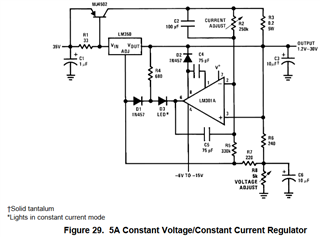Tool/software:
Hello,
I'm trying out an LM317 as a current limiter (approx. 1A max) for a purely resistive load. I've set up the design as per the datasheet (see schematic attached here).

My input voltage is +36Vdc from a lab power supply, with its own current limiter set to 2A. Vload is around +34.3Vdc, as expected.
When I try a load of 48 Ohms, I get the current as expected - approx. 0.7A. However, when I try loads of 24 Ohms and even less resistance, I hit the 2A limit on the lab power supply. I thought the circuit here would limit the current to around 1A. Am I missing something?
Thanks for any insight.


